What's New
Displaying results 1531 - 1540 of 4924
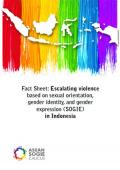
Resource | Fact Sheets,
This fact sheet provides an overview of the situation faced by LGBT persons in Indonesia amidst increasing violence and hate perpetrated both by government and non-state actors. This is written for civil society organizations and other interested groups who need reliable and summarized information to guide them in developing their advocacy plans.
The increasing violence against LGBT people in Indonesia in recent years is unprecedented and "has left many in the country's LGBT community fearing for their safety." A prominent journalist commented that "the few voices defending the rights of LGBTs are being drowned out, or rather bullied, by the growing chorus that has turned the LGBT community into Indonesia's public enemy No. 1."

Resource | Fact Sheets,
We created a toolkit to help you understand the current state of HIV vaccine research and to help you conduct outreach of your own. We’re especially excited this year about a set of infographics that explain key aspects of vaccine research – trial participant and enrollment numbers, global funding, trials timelines, and more.
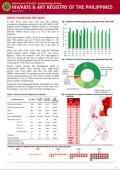
Resource | Fact Sheets,
In May 2018, there were 950 new HIV antibody seropositive individuals reported to the HIV/AIDS and ART Registry of the Philippines (HARP). Seventeen percent (166) had clinical manifestations of advanced HIV infection (WHO clinical stage 3 or 4) at the time of diagnosis.
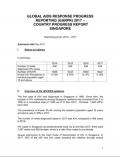
Resource | Publications,
At the 2011 United Nations General Assembly High-Level Meeting on AIDS that took place in June in New York, Member States adopted a new Political Declaration which contained new targets to effectively respond to the AIDS epidemic. The 2011 Political Declaration mandates UNAIDS to support countries in reporting back on progress made towards achieving the new commitments. It also provides for the UN Secretary-General to report regularly to the General Assembly on progress achieved in realizing these commitments.
The first case of HIV was diagnosed in Singapore in 1985. Since then, the number of HIV notifications among Singapore residents has increased from 2 in 1985 to a cumulative total of 7,982 as of 31 Dec 2017. Of these, 1,960 (25%) have died.

Resource | Publications,
The purpose of this study was to collect data on the "high-fun" realities of young gay, bisexual men and other young men who have sex with men in three major cities in the region; Bangkok, Hanoi and Jakarta. The cities were selected depending on available data on drug use.
This is a qualitative study undertaken by Youth Voices Count as a regional network and serves the purpose of collection of data to inform future interventions and advocacy of YVC on and for young gay, bisexual men and other young men who have sex with men who use drugs in sexualized settings. This study is by no means a scientific study of this phenomenon.
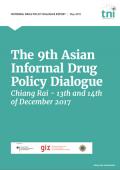
Resource | Publications,
From 12 to 14 December 2017, the Transnational Institute (TNI) and Deutsche Gesellschaft für Internationale Zusammenarbeit (GIZ), on behalf of the Federal Ministry of Economic Cooperation and Development of Germany (BMZ), in collaboration with the Thai Office of the Narcotics Control Board (ONCB) and the Mae Fah Luang Foundation under Royal Patronage (MFLF), jointly organised the 9th Asian Informal Drug Policy Dialogue (IDPD) in Chiang Rai, Thailand.
Representatives from government institutions and civil society organisations from Thailand, Myanmar, Indonesia, Cambodia, Malaysia, China, and Afghanistan, as well as several international NGOs, intergovernmental organisations and experts, including experts on drug policy from Latin America attended the Dialogue. At the Dialogue, 48 participants discussed issues around AD as well as broader (rural) development issues in the context of drug policy.
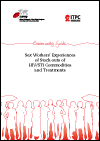
Resource | Publications,
Sex workers experienced stock-outs of antiretroviral drugs for HIV in more than half of the countries that responded to the consultation, in all types of health care settings. Sex workers experience forced treatment interruptions and involuntary medication changes due to stock-outs, and are forced to travel long distances to access commodities and treatments due to stock-outs in their local areas. This ultimately leads to a lack of trust in health services and systems.
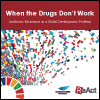
Resource | Publications,
There is a belief that innovation of new antibiotics will out-pace the development and spread of resistant bacteria. However, without rapidly addressing the way antibiotics are currently over- and mis-used, there is no chance of winning this race. Novel antibiotics will continue to play an important role, but they will not be enough. Antibiotics must be seen as a non-renewable resource. And just like in climate change, if this natural resource is exhausted, there will be nothing left for future generations. Managing antibiotic resistance relies on limiting use of antibiotics, discovery of new antibiotics or alternative ways to treat infectious diseases, but also on preventing infections and limiting spread of resistance. There are no quick fixes – antibiotic resistance is a systems failure and thus all sectors need to contribute to a change and jointly securing that antibiotics remain effective.
This report focuses on the Sustainable Development Goals related to poverty, economic growth, inequality, health, food production and the environment.
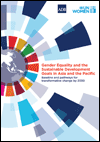
Resource | Publications,
This publication provides the first Sustainable Development Goal assessment of the situation of women and girls in Asia and the Pacific based on data from official sources.
The report establishes a baseline for governments and policy makers to monitor and accelerate progress towards gender equality commitments in the Sustainable Development Goal (SDGs). It identifies data gaps and underscores the necessity of heightened urgency to improve production and use of gender statistics for evidence-based SDG localization. It also provides valuable insight into key catalysts and policy recommendations to assist countries to achieve gender equality by 2030.






